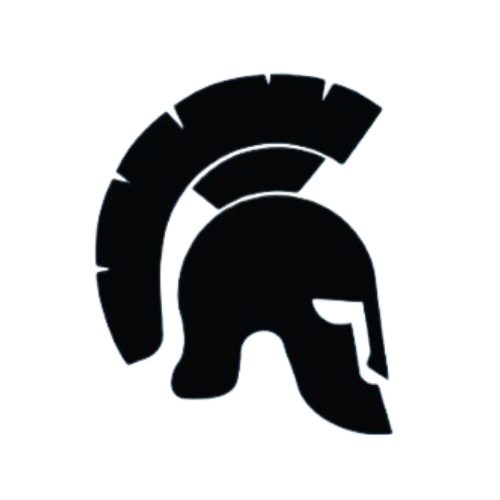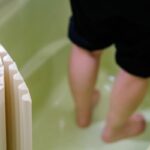Many athletes and fitness enthusiasts swear by ice baths for post-workout recovery, believing they aid in muscle repair and reduce soreness. However, concerns arise about whether these cold plunges might actually hinder muscle growth, potentially negating the benefits of intense training. This article aims to address these concerns, exploring the impact of ice baths on muscle growth from a scientific perspective, and offering alternative recovery strategies.
Does Ice Baths Reduce Muscle Growth?
Ice baths, or cold water immersion, can be beneficial for recovery but may affect muscle growth if done immediately after intense workouts. Studies show that cold exposure can reduce protein synthesis and lower hormone levels like testosterone, which are critical for muscle repair and growth.
If your goal is maximizing muscle growth, avoid ice baths right after training. Instead:
- Wait 2–4 hours after a workout before taking an ice bath to allow the inflammatory process that aids muscle repair to occur.
- Consider using ice baths on rest days for recovery benefits without impacting growth.
If your priority is reducing soreness and inflammation to stay consistent with training, ice baths can be helpful immediately after exercise, especially during high-frequency training cycles.
Counterarguments and Potential Benefits (Briefly)
Potential Benefits for Recovery
Some studies suggest ice baths can reduce post-exercise inflammation and pain. However, this effect is not directly related to muscle growth but rather to decreased inflammation and swelling. The potential benefits for recovery should be carefully balanced against the potential negative effects on muscle growth.
Ice Baths for Specific Goals
Ice baths may be beneficial for reducing muscle soreness or managing specific injuries, but these are unrelated to the primary goal of maximizing muscle hypertrophy. Ice baths can also offer a general mood boost and decrease stress, contributing to better recovery. Their effectiveness for these secondary goals can vary from person to person.
Individual Variability
Individual responses to ice baths can vary considerably. What works for one individual may not work for another. Factors such as training intensity, individual metabolism, and recovery time all contribute to the overall impact of an ice bath. A holistic approach considering individual needs is crucial to determining the optimal recovery strategies.
The Potential Negative Impact of Ice Baths on Muscle Growth
Impaired Blood Flow and Nutrient Delivery
Cold temperatures dramatically constrict blood vessels, reducing blood flow to the muscles. This reduced circulation hinders the delivery of vital nutrients, oxygen, and growth hormones essential for muscle repair and growth. Prolonged periods in cold water can significantly decrease muscle protein synthesis, the key process for building new muscle tissue. Studies have indicated that ice baths can impede this crucial process. If the muscles aren’t getting the proper nutrition, they won’t be able to effectively rebuild and grow after a workout.
Delayed Muscle Repair
Reduced blood flow translates directly into a slower rate of muscle repair. The body needs an optimal flow of nutrients to effectively synthesize proteins and regenerate damaged muscle tissues. Without adequate nutrient delivery, the repair process is prolonged, potentially slowing down overall muscle recovery and growth. This means your muscles might take longer to recover, and you might be less likely to achieve the muscle growth you’re aiming for.
Inflammation Management
Inflammation plays a crucial role in the muscle repair process. Inflammation is often a natural response to exercise and injury, but not all inflammation is bad. Moderate inflammation signals the body to begin the repair process. However, extreme cold exposure might actually prolong inflammation instead of resolving it efficiently. It’s possible the body reacts to the ice bath by downregulating the body’s natural inflammatory response. A slower and potentially less efficient inflammatory response could lead to hampered recovery and muscle growth.
Overuse and Injury
Repeated use of ice baths without sufficient recovery periods can potentially exacerbate existing injuries or lead to new ones. The intense cold might mask pain signals, allowing you to continue training even when you’ve sustained an injury. Furthermore, your proprioception (your body’s ability to sense its position) may be impacted, increasing the risk of further injury. Prioritize sufficient rest and recovery to allow your muscles to heal properly and minimize injury risks.
Specificity of Training
Ice baths, while potentially providing some minor benefits for recovery, are not a magic bullet for muscle growth. Numerous factors contribute to muscle development, including sufficient protein intake, adequate training volume and intensity, and sufficient rest. If your training regime is not optimized, introducing an ice bath could further compromise your ability to reach your muscle-building goals. The overall training stimulus must be considered when evaluating the impact of ice baths.
Misinformation and Anecdotal Evidence
The internet is rife with conflicting information about ice baths. While some individuals may report positive experiences, anecdotal evidence is not a substitute for rigorous scientific research. It’s essential to rely on reputable sources and scientific studies when considering the use of ice baths for muscle growth. Be skeptical of claims that aren’t backed by credible research.
Alternatives and Optimal Recovery Strategies
Comparison to Other Recovery Methods
Effective recovery methods exist beyond ice baths. Active recovery, such as light cardio or stretching, can improve blood flow and aid in muscle repair without the negative effects of ice baths. Massage therapy can also promote blood circulation and reduce muscle tension. Proper nutrition, ensuring adequate protein intake, is fundamental to the muscle-building process. Prioritize these methods over ice baths for maximum results.
Prioritizing Crucial Factors
Adequate sleep is vital for muscle recovery and growth. Adequate hydration is a must for optimizing your body’s ability to repair and rebuild muscle tissue after training. Prioritize sleep, hydration, and nutrition alongside other training techniques to maximize your results.
Conclusion
While ice baths might offer some minor benefits for recovery, the potential negative impact on blood flow, muscle repair, and inflammation significantly outweighs any perceived benefits for muscle hypertrophy. Prioritizing proper nutrition, sufficient rest, and targeted training regimens are key components of an effective muscle-building plan. Avoid over-reliance on ice baths and consider alternative recovery strategies for optimal results.








